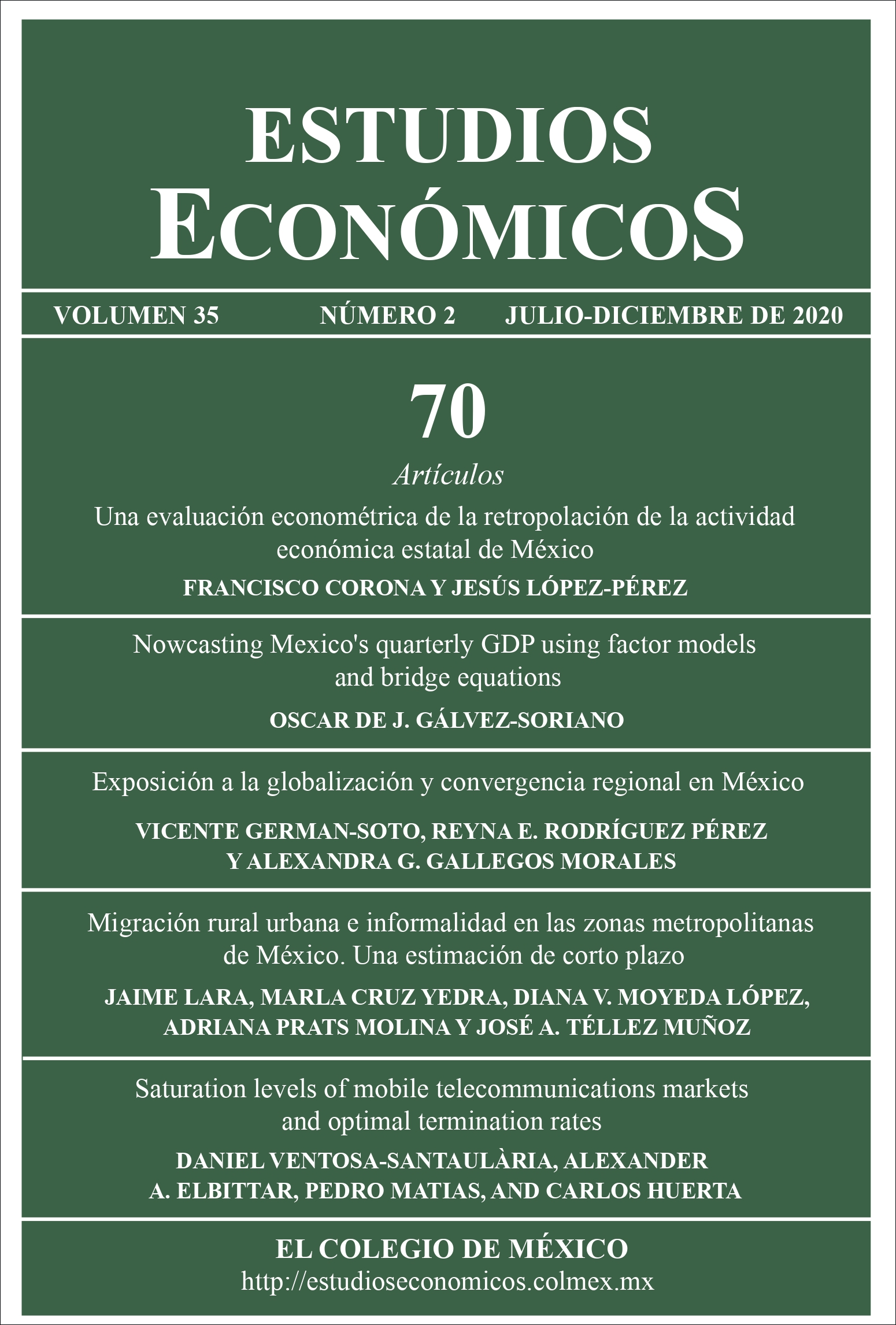Published 2020-07-01
Keywords
- mobile markets and diffusion,
- saturation levels,
- mobile termination rate
How to Cite
Abstract
This paper analyzes the how the two main mobile telecommunication payment regimes, receiving party pays (RPP) and calling party pays (CPP), impact mobile telecommunication diffusion patterns; and provides evidence that a quadratic and concave relationship exists between mobile termination rate and the level of penetration of mobile telecommunications. We also find significant evidence that competition, political regime and internet use affect the saturation rate as well. Finally, we find that the global behavior of telecommunication markets has contributed to a reduction in the gap between the optimal and actual mobile termination rates in most countries.
Downloads
References
- Armstrong, M. and J. Wright. 2009. Mobile call termination, The Economic Journal, 119(538): 3-25.
- Briceño, A. 1999. International comparison study about interconnection charges, OSIPTEL, Peru, preliminary WP, http://www.itu.int/osg/spu/ni/fmi/pricing/bricenoWP.doc
- Dewenter, R., and J. Kruse. 2011. Calling party pays or receiving party pays? The diffusion of mobile telephony with endogenous regulation, Information Economics and Policy, 23(1): 107-117.
- Genakos, C., and T. Valletti. 2011. Testing the “waterbed” effect in mobile telephony, Journal of the European Economic Association, 9(6): 1114-1142.
- Genakos, C., and T. Valletti. 2012. Regulating prices in two-sided markets: The waterbed experience in mobile telephony, Telecommunications Policy, 36(5): 360-368.
- Griliches, Z. 1957. Hybrid corn: An exploration in the economics of technical change, Econometrica, 25(4): 501-522.
- Gruber, H. and F. Verboven. 2001. The diffusion of mobile telecommunications in the European Union, European Economic Review, 45(3): 577-588.
- Hermalin, B., and M. Katz. 2001. Network interconnection with two-sided user benefits, University of California, Berkeley, retrieved from internet: http://faculty.haas.berkeley.edu/HERMALIN/Interconnection_v14.pdf
- Hurkens, J.P.M. and D.S. Jeon. 2009. Mobile termination and mobile penetration, WP no. 393, Barcelona Graduate School of Economics, retrieved from internet: https://ssrn.com/abstract=1485364
- Littlechild, S.C. 2006. Mobile termination charges: calling party pays versus receiving party pays, Telecommunications Policy, 30(5-6): 242-277.
- OECD. 2019a. Mobile termination rates in OECD countries, USD, 25 October 2012, retrieved from internet: https://www.oecd.org/sti/broadband/MTRs_OECD_Oct2012.xlsx on oct.2019.
- OECD. 2019b. Historical population data and projections (1950-2050), retrieved from internet: https://stats.oecd.org/Index.aspx?DataSetCode=POP_PROJ on oct. 2019.
- Valletti, T.M., and C. Cambini. 2005. Investments and network competition, RAND Journal of Economics, 36(2): 446-467.
- World Bank. 2019. Mobile cellular subscription. International Telecommunication Union, World Telecommunication/ICT Development Report and Database, retrieved from internet: https://data.worldbank.org/indicator/IT.CEL.SETS on oct. 2019.
- Wright, J. 2003. Access pricing under competition: An application to cellular networks, The Journal of Industrial Economics, 50(3): 289-315.

